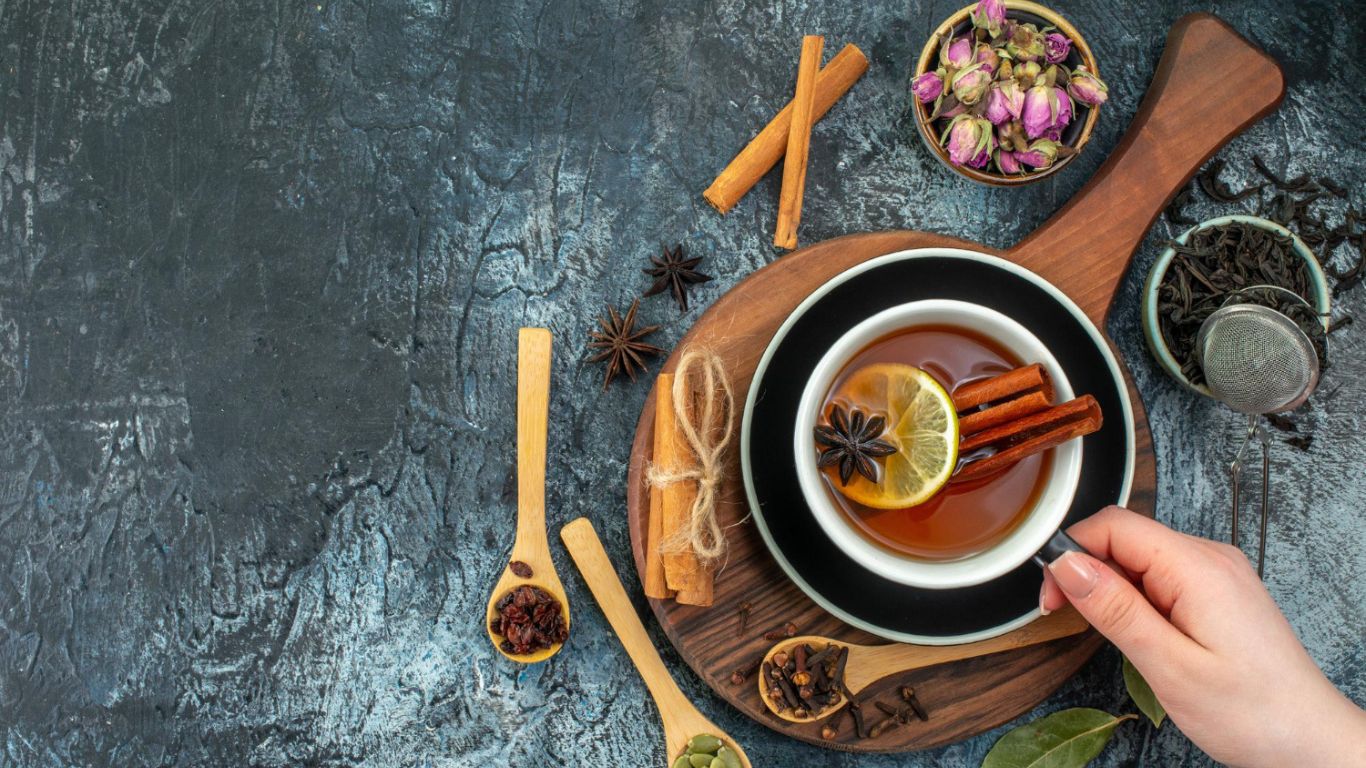Tea, the aromatic beverage enjoyed worldwide, boasts a rich history. While China is often credited with its origin, India has its own fascinating legend about how tea came to be. This tale, steeped in perseverance and the quest for enlightenment, revolves around a Buddhist monk named Bodhidharma.
The Determined Bodhidharma
Bodhidharma, a revered Buddhist scholar, embarked on a long journey from India to China to spread the teachings of Buddhism. He arrived at the Shaolin Monastery, a renowned center for martial arts training. Committed to achieving enlightenment, Bodhidharma vowed to engage in extended meditation sessions. However, these long periods of stillness brought a formidable foe – sleep. Despite his best efforts, drowsiness threatened to disrupt his meditation, hindering his progress.
A Drastic Measure and a Miraculous Result
Determined not to succumb to sleep, Bodhidharma resorted to a drastic measure. In a display of immense willpower, he is said to have cut off his eyelids and thrown them to the ground. From these fallen eyelids, miraculously, sprouted ten tea plants. The leaves of these unique plants held a surprising property – they possessed the power to ward off drowsiness.
The Gift of Alertness
Intrigued by this discovery, Bodhidharma brewed a concoction using the tea leaves. The resulting beverage, invigorating and clear, helped him stay awake during his meditation sessions. News of this miraculous plant spread through the monastery, and soon, tea leaves became a staple among the monks, aiding their long hours of meditation.
Beyond the Legend: The Allure of Tea in India
While the legend of Bodhidharma adds a touch of whimsy to the story of tea’s arrival in India, historical evidence suggests tea consumption existed in India much earlier. Assam, a state in northeastern India, is known for its robust black teas, and archaeological evidence points to tea cultivation in the region dating back centuries. Literary references in ancient Indian texts like the Rigveda also hint at the knowledge of herbal beverages, possibly including tea.
Historical Evidence of Early Tea Consumption
Discovery of teaware and written records from Assam and other regions suggest tea consumption in India possibly as early as the 2nd century BC. These findings challenge the notion that tea arrived in India solely through the legend of Bodhidharma.
Ayurveda and Tea in Indian Culture
Ayurveda, the traditional Indian medical system, emphasizes the holistic approach to health and well-being. Plants and herbs play a significant role in Ayurveda, and it’s possible that tea leaves were recognized for their medicinal properties early on, further influencing their consumption in India.
The Diverse Landscape of Indian Tea
India boasts a diverse landscape when it comes to tea. From the verdant hills of Darjeeling, renowned for its delicate, muscatel-flavored black teas, to the plains of Assam, where strong, malty black teas flourish, each region offers a unique taste profile. The Nilgiri Hills in South India are known for their fragrant black teas with hints of spice, while the emerald estates of Kangra in the Himalayas produce lighter black teas. This variety caters to a wide range of palates, making Indian tea a global favorite.
Chai: The Quintessential Indian Cup
No exploration of Indian tea is complete without mentioning chai, the quintessential Indian cup. This spiced milk tea is a vibrant concoction, typically brewed with black tea leaves, milk, sugar, and a blend of aromatic spices like ginger, cardamom, cinnamon, and cloves. Chai is more than just a beverage; it’s a cultural touchstone. It is served by street vendors in steaming glasses, enjoyed in homes during breaks, and offered to guests as a gesture of hospitality. The aroma of chai fills the air in streets and cafes, creating a sensory experience that is undeniably Indian.
Tea: A Social Experience
Tea transcends beverage in Indian culture; it’s a social experience. A steaming cup of tea fosters conversation, connection, and a moment of pause in the midst of daily life. Friends gather for elaborate “chai pe charcha” (conversations over tea), discussing everything from politics to personal matters. Families bond over cups of tea, sharing stories and laughter. Tea breaks are a welcome respite in workplaces, allowing colleagues to connect and recharge.
Exploring Tea’s Health Benefits and Rituals
The allure of Indian tea extends far beyond the first sip. While its delicious taste is undeniable, Indian tea boasts a rich tapestry of health benefits, deeply ingrained rituals, and a growing emphasis on sustainability.
Indian tea is more than just a refreshing drink; it’s a treasure trove of potential health benefits. Many varieties boast an abundance of antioxidants, which can help combat harmful free radicals in the body. Certain teas may even hold promise for boosting metabolism, promoting relaxation, and aiding in digestion. For centuries, these potential health benefits have been a cornerstone of traditional Indian medicine.
Tea Tourism and Environmental Impact
For those eager to explore the world of Indian tea beyond their teacup, tea tourism offers a unique opportunity. Visitors can embark on guided tours of tea estates, learning about the cultivation and processing of tea while immersing themselves in the scenic beauty of tea-growing regions.
Furthermore, there’s a growing emphasis on sustainable and ethical tea production in India. From organic farming practices to fair trade initiatives, the tea industry is evolving to minimize its environmental footprint and uplift local communities.
Conclusion: A Legacy Steeped in Tradition
The Indian legend of Bodhidharma, though fantastical, captures the essence of tea’s invigorating properties. It highlights the historical significance of tea in Indian culture and its enduring role in everyday life. Whether enjoyed for its stimulating effect, calming presence in a cup of masala chai, or simply for the joy of a shared cup of Darjeeling with loved ones, tea continues to be a beloved beverage with a rich and vibrant legacy in India.
Frequently Asked Questions
What is the Indian legend about discovering tea?
The legend tells the story of Bodhidharma, a Buddhist monk, who cut off his eyelids to fight sleep during meditation. Miraculously, tea plants sprouted from his fallen eyelids, and the leaves, when brewed, offered him alertness.
Is the legend true?
While captivating, the legend is likely symbolic. Historical evidence suggests tea consumption in India predates Bodhidharma.
What are some famous tea regions in India?
- Darjeeling: Known for its delicate, muscatel-flavored black teas.
- Assam: Renowned for strong, malty black teas.
- Nilgiri Hills: Famous for fragrant black teas with hints of spice.
- Kangra: Produces lighter black teas.
What is chai?
Chai, the quintessential Indian cup, is a spiced milk tea. Black tea leaves are brewed with milk, sugar, and aromatic spices like ginger, cardamom, cinnamon, and cloves.
How is tea significant in Indian culture?
Tea transcends beverage; it’s a social experience. From “chai pe charcha” (conversations over tea) to family gatherings and workplace breaks, tea fosters connection and a moment of pause.

